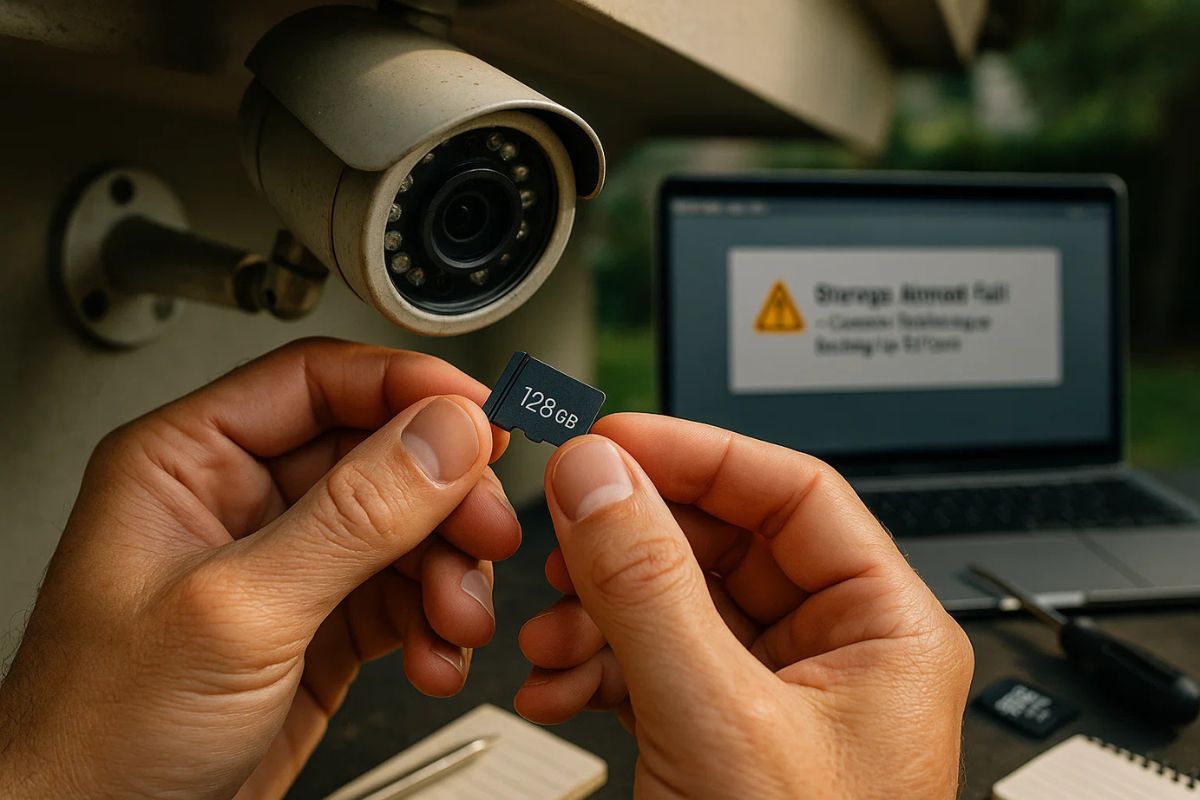What Happens When SD Card Gets Full?
When your CCTV camera’s SD card reaches its maximum capacity, the next steps depend on the camera model and its recording settings. Most modern security cameras use loop recording to automatically overwrite the oldest video files with new footage, ensuring continuous monitoring without manual intervention. However, some basic or older models stop recording entirely once the card is full, creating potential blind spots if you’re unaware of the storage status. More advanced systems may include storage alerts, automatic cloud backup, or adjustable file retention settings to manage full memory efficiently. To ensure your system is set up correctly and running optimally, rely on reliable CCTV installation services that can configure your cameras for consistent surveillance and maximum protection.
Continuous vs. Motion Recording: How It Affects Storage
The way your CCTV camera records video has a major impact on how quickly your SD card fills up. There are generally two recording modes: continuous recording and motion-activated recording, and each uses storage very differently.
Continuous Recording
In continuous mode, your camera captures every second of footage around the clock. While this provides complete coverage, it also consumes storage at a much faster rate. Even a large-capacity SD card like 128GB or 256GB can be filled within a matter of days if you’re recording at a high resolution like 1080p or 4K. This mode is best suited for locations where security risks are high and constant monitoring is essential, such as retail stores, warehouses, or construction sites.
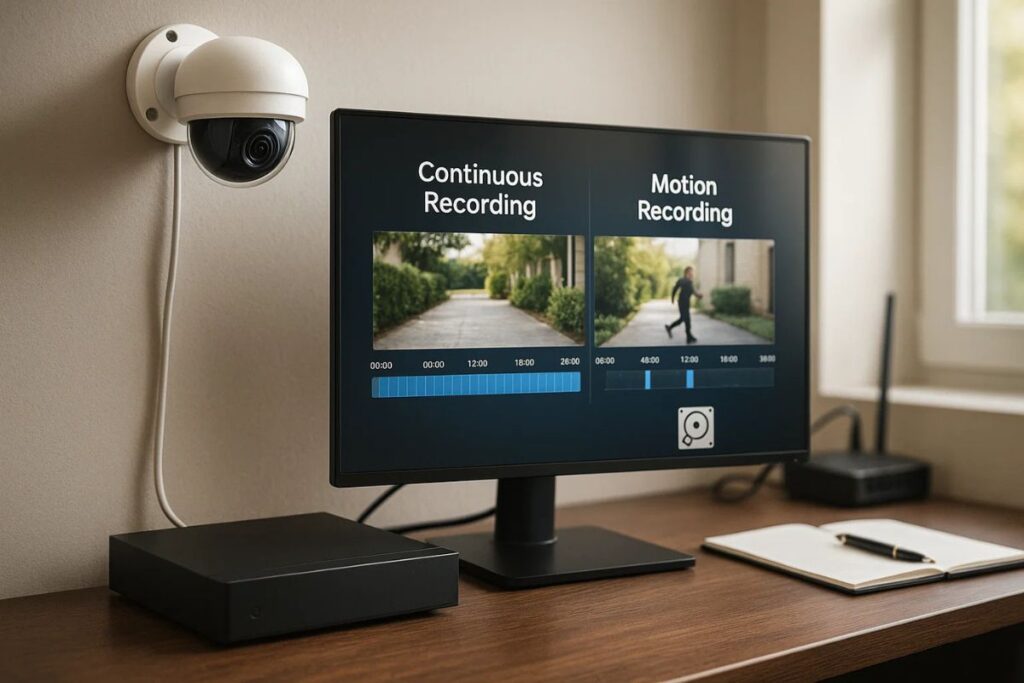
Motion Detection Recording
On the other hand, motion-activated recording only stores video when movement is detected within the camera’s field of view. This conserves a significant amount of storage space because the camera isn’t saving hours of still footage with no activity. For many home users or small offices, this mode strikes the right balance between storage efficiency and meaningful surveillance.
Choosing the Right Mode for Your Needs
If your goal is to maximize how long your footage is stored, motion recording is the smarter option. It can extend the lifespan of your SD card and make it easier to find relevant events in playback. However, if your security needs demand full-time monitoring—such as in high-traffic or sensitive environments—then continuous recording may be necessary, even if it means more frequent SD card maintenance.
Ultimately, your recording mode should align with both the level of risk in your environment and the capacity of your SD card.
Can You Use a Security Camera Without an SD Card?
It is possible to use a CCTV camera without an SD card, but there are limitations you should understand. Whether or not a camera can function without onboard storage depends largely on the model and the available alternatives for saving footage.
Functionality Without an SD Card
Many modern security cameras are designed to operate without relying solely on an SD card. These devices can stream live footage in real time, making them suitable for monitoring situations where recording is not essential. However, once the SD card is removed or not installed, these cameras typically lose the ability to store past footage locally.
Some basic or older models, especially those that don’t support cloud storage or network connectivity, may become non-functional for anything beyond live viewing if the SD card is missing. In such cases, the camera will continue to capture video, but none of it will be saved for later review.
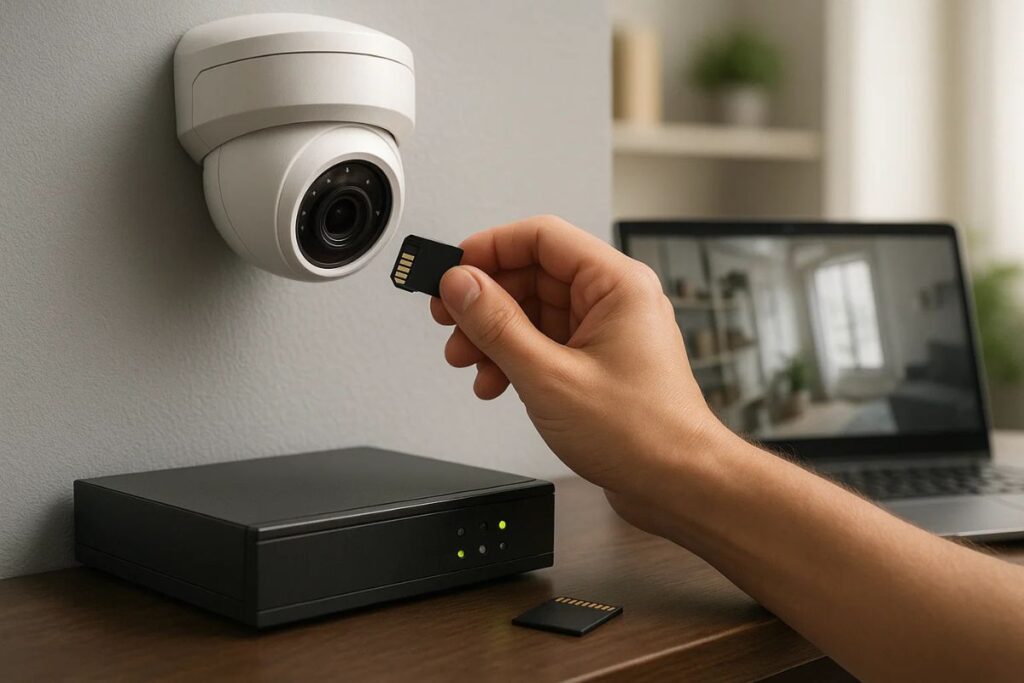
Alternatives to SD Card Recording
Advanced CCTV systems often support cloud-based recording. With this setup, footage is uploaded to a secure server over the internet, usually through a paid subscription. This provides remote access to recordings and ensures your data isn’t lost due to theft or hardware failure.
Another common alternative is connecting the camera to an NVR (Network Video Recorder) or DVR system. These centralized recording solutions store footage from multiple cameras and allow larger storage capacities, often measured in terabytes. In such systems, the SD card serves as a backup rather than the primary storage.
Use Cases for Live-View-Only Cameras
There are legitimate scenarios where using a security camera without an SD card makes sense. Baby monitors, pet cameras, and smart doorbells often focus on real-time monitoring and two-way communication, prioritizing live streaming over storage unless specific events need saving. While SD cards offer valuable local storage, cameras can still be effective without them, especially when other recording options are available. To explore reliable devices that fit into a complete security strategy, you can shop Dahua 900 series intercom systems for high-quality, subscription-free solutions.
How to Use a Security Camera Without an SD Card
Using a CCTV camera without an SD card is entirely feasible, especially with the rise of smart home technology and internet-enabled devices. If your camera supports alternative storage or streaming features, you can continue to monitor and even save footage without relying on internal memory.
Enable Cloud Storage (If Available)
Many modern security cameras come with cloud storage options. This feature allows footage to be automatically uploaded and stored on remote servers, accessible through an app or web interface. Brands like Arlo, Reolink, and Google Nest offer subscription-based plans that let you store and access video clips without using an SD card.
To use cloud storage, you typically need to:
- Set up an account with the camera’s manufacturer.
- Connect the camera to a stable Wi-Fi network.
- Subscribe to a suitable storage plan (some offer limited free tiers).
Once configured, the camera will upload motion-triggered or continuous footage to the cloud, where you can view and download it at any time.
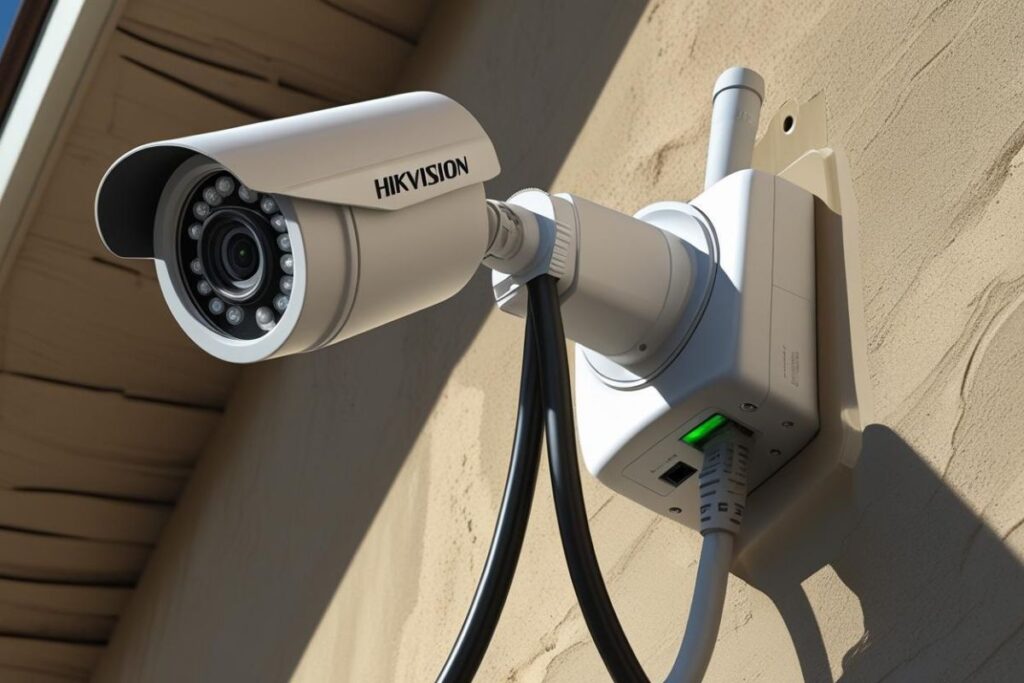
Connect to an NVR or Computer-Based System
For users who prefer local storage without relying on SD cards, an NVR (Network Video Recorder) or a computer-based recording setup is a powerful alternative. NVRs are commonly used in business and multi-camera home security systems. They allow continuous or motion-triggered recording from IP cameras over a local network.
In a DIY setup, you can use software like Blue Iris, iSpy, or ZoneMinder to turn your PC into a recording hub. Just ensure the camera supports RTSP or ONVIF protocols for compatibility.
This setup offers:
- Higher storage capacity
- Centralized management of multiple cameras
- Long-term archiving options
Use the Camera for Live Streaming Only
If your goal is simply to watch real-time video, you can use the camera without any storage device. This is useful for temporary surveillance, indoor monitoring, or communicating through two-way audio features. Many indoor cameras and smart devices like baby monitors or video doorbells offer live viewing via mobile apps without needing any storage medium.
Keep in mind that without storage either on an SD card, cloud, or NVR you won’t be able to review past footage. This limits the camera’s usefulness in event verification or evidence collection.
What Size SD Card Do You Need for a CCTV Camera?
Choosing the right SD card size for your CCTV camera depends on several factors, including the video resolution, whether you use continuous or motion-based recording, the frame rate, and how long you want to keep the footage before it gets overwritten or deleted. To enhance your security setup and integrate smooth communication, you can also upgrade to a modern video intercom system that complements your CCTV installation.
Resolution and Recording Type Matter
The higher the video quality, the more space it takes up. For example, a 4K camera will consume significantly more storage than a 720p or 1080p camera. Similarly, continuous recording fills up storage much faster than motion-triggered recording. If your camera captures every second, the SD card will reach its limit quickly, requiring frequent overwriting or manual deletion. On the other hand, motion-based recording captures only when activity is detected, significantly saving space.
Estimated Storage Duration Based on Card Size
For a standard 1080p camera set to motion detection, here’s a rough guide to how long different SD card sizes might last:
- 32GB – Around 2 to 3 days of footage
- 64GB – Around 5 to 7 days of footage
- 128GB – Around 10 to 15 days of footage
- 256GB – Around 20 to 30 days of footage
These estimates can vary depending on how frequently motion is detected, the compression settings used (such as H.264 or H.265), and other technical factors.
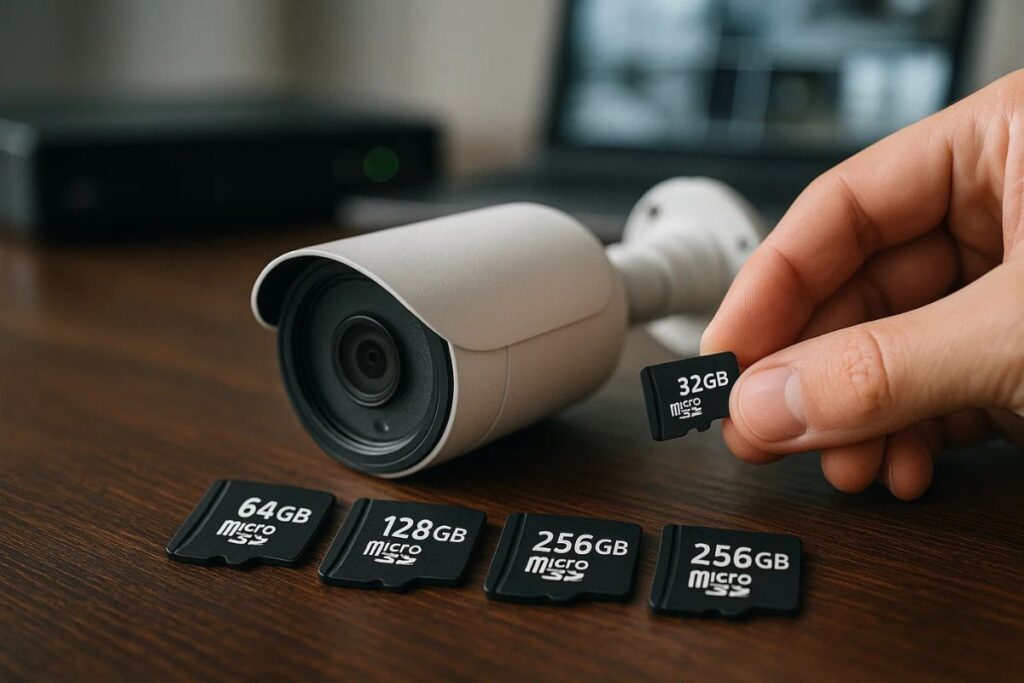
Check Camera Compatibility Before Upgrading
Before purchasing a high-capacity SD card, it’s important to verify your camera’s maximum supported capacity. Not all CCTV models support large SD cards. For instance, many budget cameras may only recognize up to 64GB or 128GB cards, even if you insert a 256GB one. Check the product specifications or user manual to avoid compatibility issues.
Choosing the right card size ensures optimal performance and reduces the need for constant maintenance, especially if you’re using motion-based recording to maximize storage efficiency. If you’re setting up a new system, you can also get expert alarm system setup in Melbourne to ensure everything works seamlessly.
Before purchasing a high-capacity SD card, it’s important to verify your camera’s maximum supported capacity. Not all CCTV models support large SD cards. For instance, many budget cameras may only recognize up to 64GB or 128GB cards, even if you insert a 256GB one. Check the product specifications or user manual to avoid compatibility issues.
Choosing the right card size ensures optimal performance and reduces the need for constant maintenance, especially if you’re using motion-based recording to maximize storage efficiency. If you’re setting up a new system, you can also get expert alarm system setup in Melbourne to ensure everything works seamlessly.



